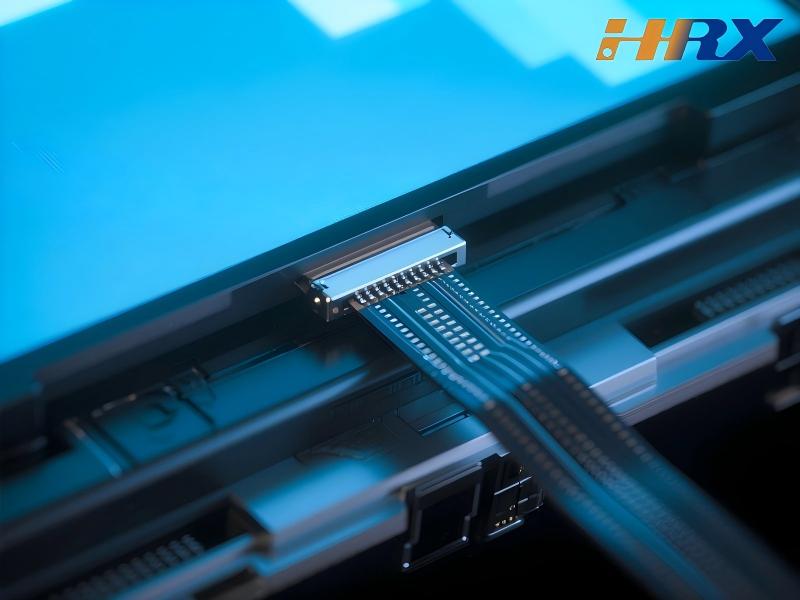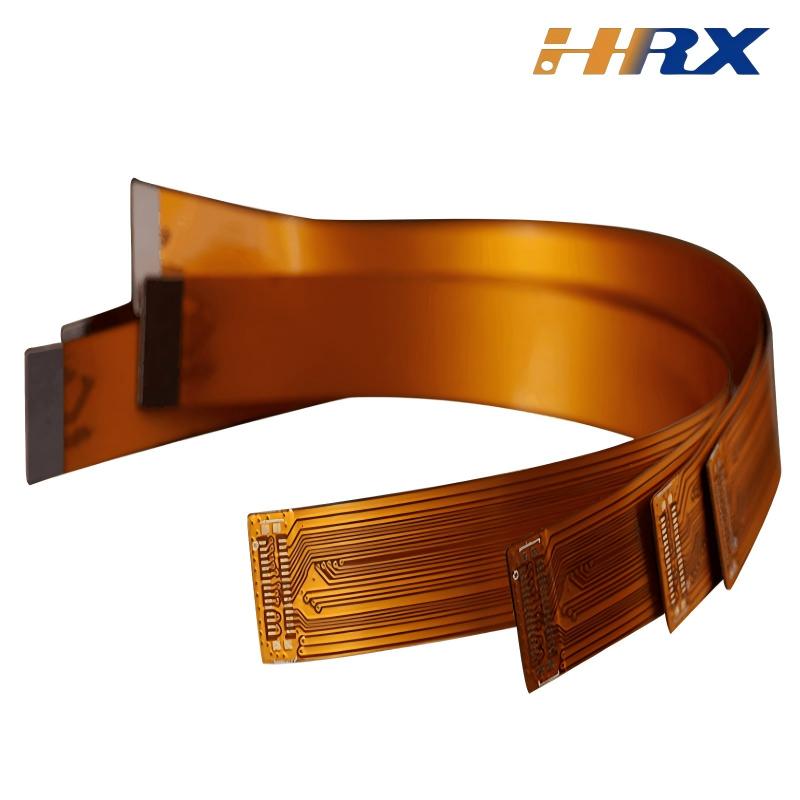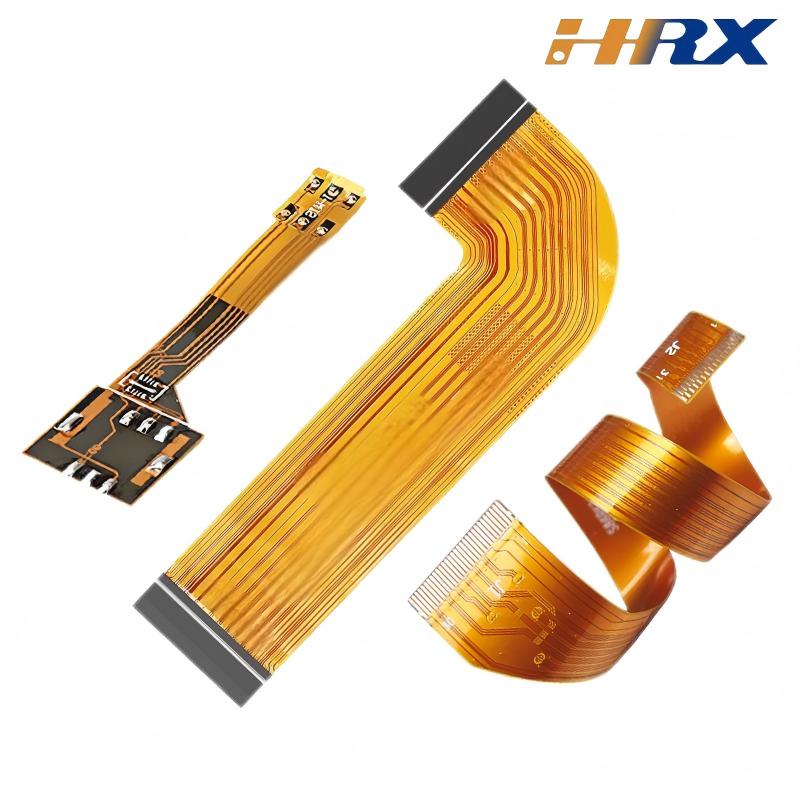Search
Common Quality Issues of FPC Flexible Circuit Boards in LCD Products and Solutions
- Jun 17,2025
-
Share
In the rapidly evolving landscape of modern display technology, Liquid Crystal Displays (LCDs) have established their dominance across a vast array of electronic devices, ranging from sleek smartphones and portable tablets to large - format televisions. Flexible Printed Circuit Boards (FPCs), with their inherent flexibility, lightweight design, and space - saving capabilities, have become indispensable components in LCD products, enabling seamless interconnections between various display elements. However, the intricate nature of FPCs used in LCDs makes them susceptible to several quality - related challenges that can significantly impact the overall performance, reliability, and user experience of the display.

Common Quality Issues of FPCs in LCD Products
1. Delamination
Delamination, a prevalent defect in FPCs for LCD applications, refers to the separation of the multi - layer structure of the flexible circuit board. This phenomenon often occurs due to suboptimal bonding processes during manufacturing, exposure to extreme environmental conditions such as high temperatures and humidity, or mechanical stress induced during assembly or operation. In LCD systems, delamination can disrupt the electrical integrity of the FPC, leading to signal transmission failures, which manifest as display anomalies such as flickering, horizontal or vertical lines on the screen, and in severe cases, complete display malfunction. The use of a polyimide substrate, a common material in FPCs, can be affected by delamination if the adhesive used for bonding does not have adequate thermal stability and bonding strength.
2. Open Circuits and Short Circuits
Open circuits, characterized by the interruption of the electrical pathway, and short circuits, where an unintended electrical connection occurs, are among the most critical quality issues in FPCs for LCDs. These defects can originate from a variety of sources, including improper trace routing during the design phase, insufficient soldering during assembly, or physical damage sustained during handling. In LCD displays, open circuits can cause sections of the screen to go dark or display incorrect information, while short circuits can result in excessive current flow, leading to overheating, abnormal power consumption, and potential damage to other components in the device. The micro - via technology, often employed in high - density FPCs for LCDs, is particularly vulnerable to open and short circuits if not manufactured with precision.
3. Poor Adhesion of Conductive Materials
The adhesion of conductive materials, such as copper traces, to the flexible substrate is of paramount importance for the reliable operation of FPCs. Insufficient adhesion can lead to the detachment of conductive elements over time, which can be attributed to inappropriate surface treatment of the substrate, incorrect selection of adhesives, or non - optimal processing conditions. In LCD applications, poor adhesion can disrupt the electrical signals, resulting in inconsistent display quality, color distortion, and intermittent display issues. Anisotropic conductive film (ACF), commonly used for connecting FPCs to LCD panels, requires a high level of adhesion to ensure proper electrical connection and prevent signal degradation.
4. Thermal Deformation
FPCs in LCD - equipped devices are frequently exposed to fluctuating temperatures during operation, which can lead to thermal deformation. This occurs when the flexible circuit board undergoes dimensional changes due to thermal stress, causing misalignment of components, damage to electrical connections, and interference with the normal operation of the LCD. In automotive LCD displays, where the temperature can vary significantly, thermal deformation of FPCs can lead to reduced display performance and a shortened product lifespan. Materials with a low coefficient of thermal expansion (CTE), such as liquid - crystal polymers (LCPs), are often preferred to mitigate thermal deformation in FPCs for high - temperature applications.
5. Contamination
Contamination, including particulate matter, dust, and chemical residues, can have a detrimental impact on the performance of FPCs in LCDs. During the manufacturing, handling, and assembly processes, contaminants can accumulate on the surface of the FPC, causing electrical insulation problems, short circuits, or corrosion of conductive materials. Even minute particles of dust can disrupt the delicate electrical connections in an FPC, resulting in display defects. Cleanroom manufacturing environments, with strict control over air quality and particle levels, are essential for preventing contamination in FPC production for LCDs.
Solutions to FPC Quality Issues in LCD Products
1. Delamination Prevention and Solution
To prevent delamination, manufacturers must implement stringent quality control measures during the bonding process. This involves using high - performance adhesives with excellent bonding strength, thermal stability, and chemical resistance. Optimizing the bonding temperature, pressure, and time parameters is crucial to ensure a strong and durable bond between the layers of the FPC. Additionally, thorough pre - treatment of the surfaces, such as plasma cleaning or chemical etching, can enhance the adhesion of the adhesive. In the event of delamination, for minor cases, re - bonding using specialized equipment and techniques may be attempted. However, for severe delamination, replacement of the FPC is often the only viable solution.
2. Addressing Open and Short Circuits
Advanced manufacturing techniques, such as automated optical inspection (AOI) and X - ray inspection, play a vital role in detecting open and short circuits during the production of FPCs for LCDs. These non - destructive inspection methods can identify even the smallest defects in the electrical traces, vias, and solder joints with high precision. For open circuits, re - soldering or the addition of jumper wires may be employed to restore the electrical connection. In the case of short circuits, careful de - soldering and re - routing of the traces may be necessary. Implementing strict quality control during the assembly process, including proper handling of components, maintaining a clean working environment, and using high - quality soldering materials, can significantly reduce the occurrence of these issues.
3. Improving Adhesion of Conductive Materials
Enhancing the adhesion of conductive materials to the flexible substrate requires a comprehensive approach. Proper surface treatment of the substrate, such as roughening the surface to increase the surface area for better adhesion, is essential. Selecting the appropriate adhesive that is compatible with both the substrate and the conductive materials is equally important. Conducting extensive adhesion tests under various environmental conditions, including temperature, humidity, and mechanical stress, can help ensure the long - term stability of the adhesion. In case of adhesion problems, the FPC may need to be re - processed with improved adhesion - enhancement techniques or replaced with a new FPC.
4. Mitigating Thermal Deformation
Designing FPCs with materials that have low CTE and excellent thermal stability is the key to mitigating thermal deformation. Using materials such as LCPs or modified polyimides can significantly reduce the dimensional changes of the FPC under thermal stress. Additionally, implementing proper thermal management strategies, such as incorporating heat - dissipating materials, optimizing the component layout to minimize heat concentration, and providing thermal relief structures, can help dissipate heat effectively and reduce thermal stress on the FPC. In some cases, using flexible thermal interface materials can improve heat transfer and further reduce the risk of thermal deformation.
5. Contamination Control
Maintaining a clean manufacturing environment is crucial for preventing contamination in FPC production for LCDs. This includes operating in cleanrooms with high - efficiency particulate air (HEPA) filters to remove dust and other particulate matter from the air. Providing workers with appropriate protective clothing, gloves, and masks, and implementing strict cleaning and handling procedures can also help prevent contamination. After the manufacturing process, FPCs should be carefully cleaned using suitable solvents and drying methods to remove any residual contaminants. In case contamination is detected, appropriate cleaning or decontamination processes should be carried out immediately, and if the damage is severe, the FPC may need to be discarded.
Shenzhen Huaruixin Electronics Co., Ltd.: A Professional Solution Provider
Shenzhen Huaruixin Electronics Co., Ltd. is a leading global ODM/OEM manufacturer specializing in the design, development, and production of FPCs, PCBs, and Rigid - Flex Printed Boards. With a state - of - the - art manufacturing facility and a team of highly skilled professionals, the company has established itself as a trusted partner in the production of high - quality FPCs for LCD applications.
The company's commitment to quality is evident in its rigorous quality control processes, which cover every stage of production, from raw material procurement to final product inspection. By leveraging advanced manufacturing technologies, such as high - precision automated production lines, cutting - edge inspection equipment, and innovative process control methods, Shenzhen Huaruixin Electronics Co., Ltd. effectively addresses the common quality issues associated with FPCs in LCD products.
For instance, in the prevention of delamination, the company uses top - tier adhesives and precisely controls the bonding process parameters to ensure a strong and reliable bond. To detect and eliminate open and short circuits, a combination of AOI and X - ray inspection is employed at multiple production stages, ensuring the electrical integrity of the FPCs. In the area of improving adhesion, the company invests in continuous research and development to adopt the latest surface treatment and adhesive - selection techniques, ensuring the long - term stability of the FPCs.
If you have any project requirements related to FPCs for LCDs or other printed circuit board needs, Shenzhen Huaruixin Electronics Co., Ltd. is your ideal partner. Our team of experts is ready to provide customized solutions tailored to your specific requirements. For more in - depth industry knowledge, detailed product information, and to explore potential collaboration opportunities, please visit our website www.hrxfpc.com or send an email to sales@hrxfpc.com. We look forward to engaging in productive discussions, sharing insights, and providing professional guidance to meet your FPC and PCB needs.
In conclusion, while FPCs in LCD products face numerous quality challenges, with the implementation of advanced manufacturing techniques, strict quality control measures, and the expertise of professional manufacturers like Shenzhen Huaruixin Electronics Co., Ltd., these issues can be effectively overcome. This ensures the production of high - quality, reliable FPCs that contribute to the optimal performance and longevity of LCD displays across a wide range of applications.

Let’s talk! We’ll provide the perfect solution for you!
-
 Huaruixin Electronics mainly produces printed circuit boards as the core business, to provide customers with one-stop solutions for FPC/PCB production, components sourcing and Assembly.
Huaruixin Electronics mainly produces printed circuit boards as the core business, to provide customers with one-stop solutions for FPC/PCB production, components sourcing and Assembly. - WHAT WE DO — PCB Design Solutions — Flex PCB Production — Components Sourcing — FPC&PCB Assembly
- PRODUCTS — Single Sided Flexible Circuits — Double Sided Flexible Circuits — Multilayer Flexible Cirucits — Rigid-Flex Circuits — FPC Assembly — PCB Assembly
- CAPABILITY — FPC Capability — Rigid-Flex Capability — PCB Capability — Assembly Capability
- Copyright © 2024 Shenzhen Huaruixin Electronics Co., Ltd. All Rights Reserved.
- Design By BONTOP


